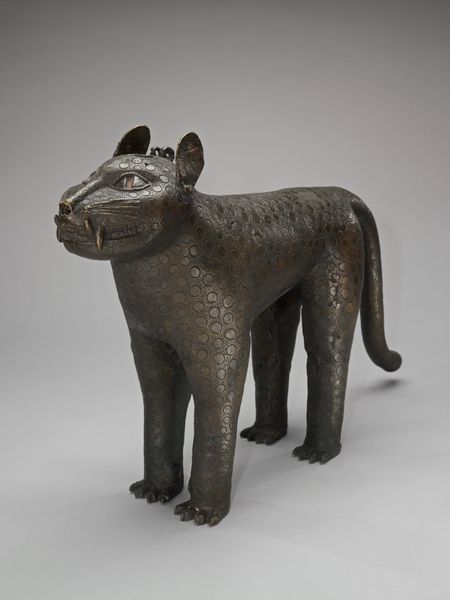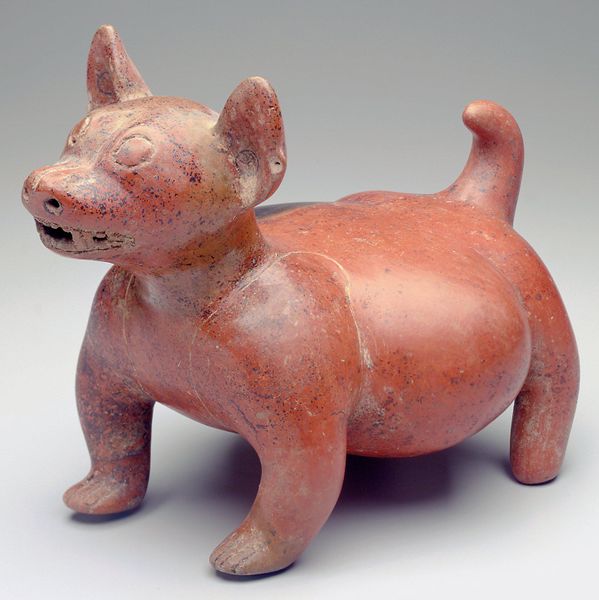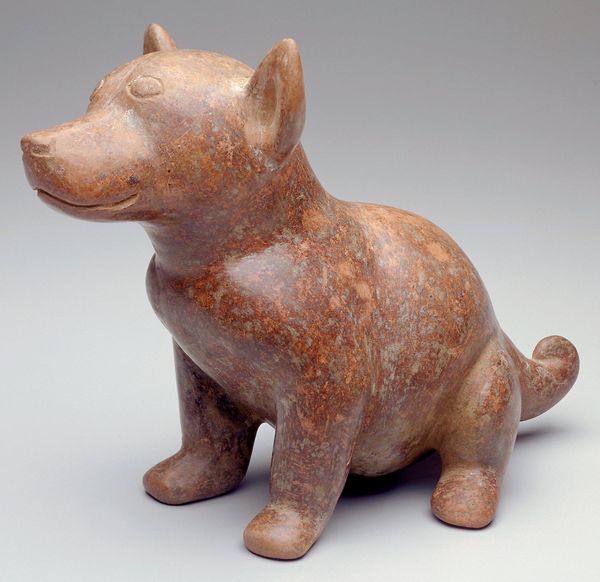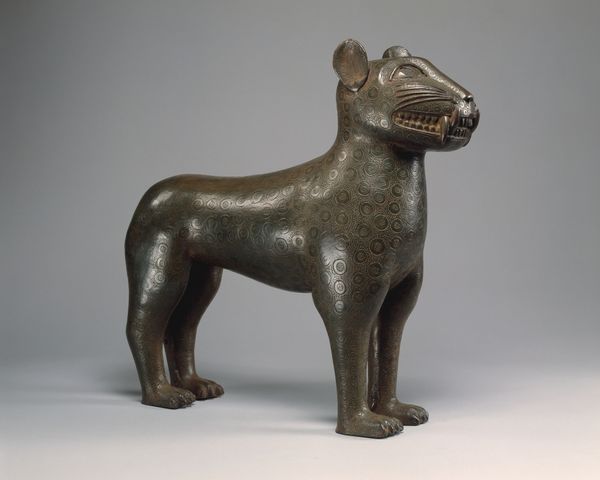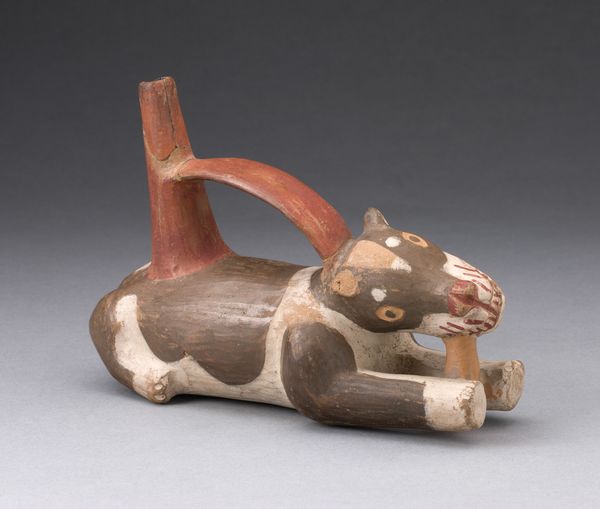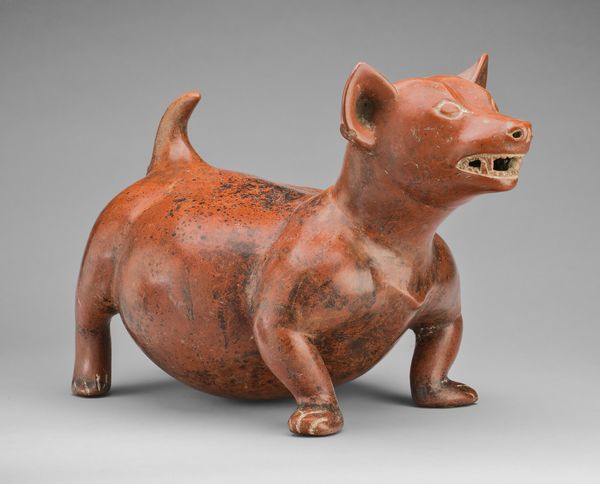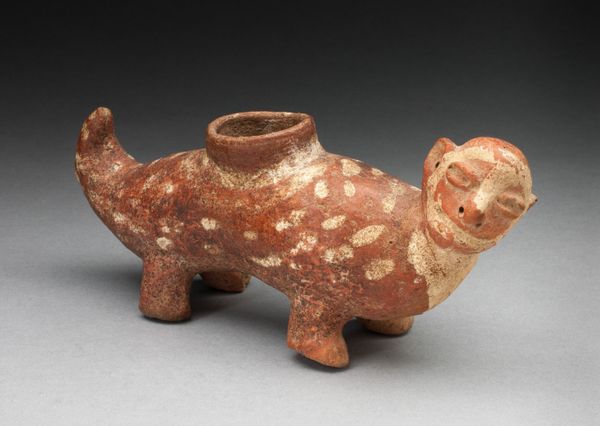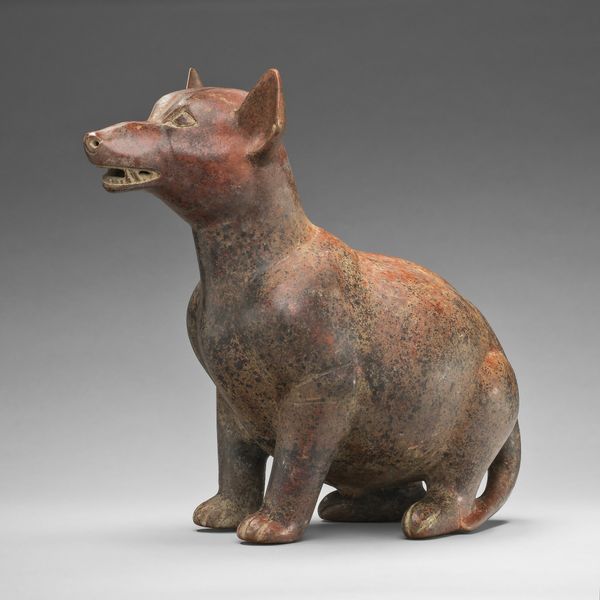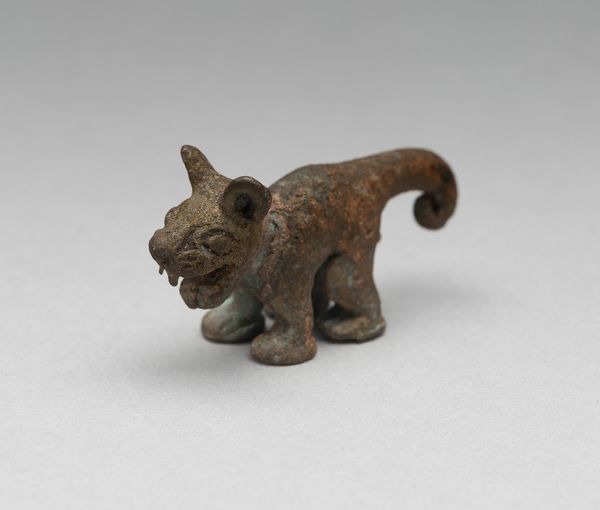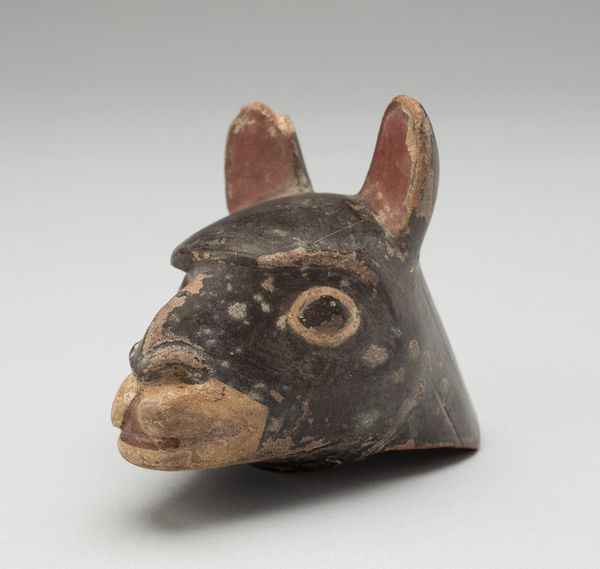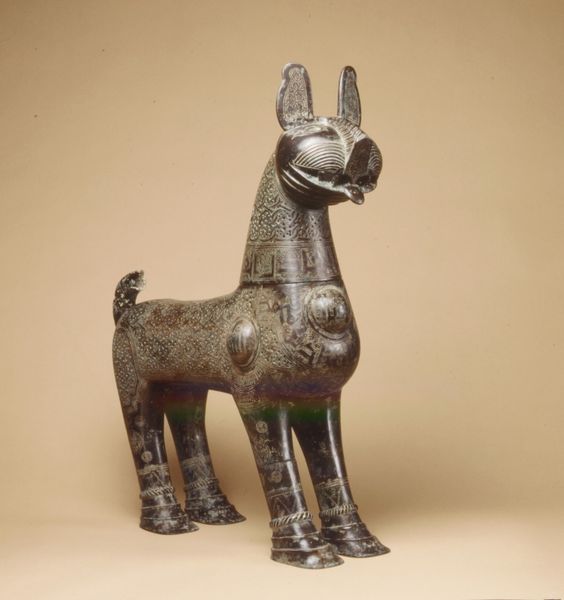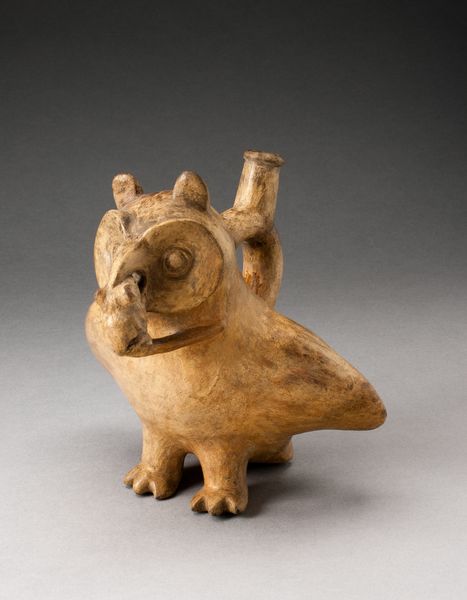
Figurine in the Form of a Striped Feline Wearing Collar Possibly 1200 - 1470
0:00
0:00
ceramic, sculpture
#
ceramic
#
figuration
#
form
#
sculpture
#
indigenous-americas
Dimensions: 7 × 10.6 cm (2 3/4 × 4 3/16 in.)
Copyright: Public Domain
Curator: Here we have a ceramic sculpture titled "Figurine in the Form of a Striped Feline Wearing Collar," likely crafted sometime between 1200 and 1470. It gives us insight into the Inca culture and their artistic practices. Editor: The immediate impression is its earthiness; you can almost feel the hand that shaped it. It feels simultaneously weighty and fragile, the dull clay and primitive firing process giving a visceral sense of the maker’s hand and labor. Curator: Absolutely. The Inca civilization was deeply connected to the natural world. The feline, potentially a jaguar or puma, held significant spiritual power, representing strength and agility. It allows us to understand a reverence for nature through a symbolic lens that was projected onto real and imagined worlds. Editor: The use of ceramic here is compelling. Clay, after all, is readily available and highly transformable, so what were the processes for excavation, and how were materials collected, treated and deployed? Its abundance makes me think about what it meant to have access to labor that could afford to create something like this, which begs the question – for whom was it made? Curator: That's precisely where considering the 'collar' becomes significant. Collars often denote domestication or status. If this figurine represents a domesticated feline, it challenges assumptions about Incan relationships with powerful animals, implying a complex interplay of power and control over the natural world. What happens when we re-think domestication within the histories of colonial power? Editor: And that collar detail, rendered with small strokes, indicates that a different firing, or surface-treatment must have been employed here to create such a contrasting effect. I think there is also something to be said about the scale, this couldn’t have been a large item, I would bet, making its handling, its materiality as a kind of haptic instrument or intimate object even more remarkable. Curator: Precisely! Considering both material limitations and cultural nuances reveals complex societal values. It highlights an intrinsic and negotiated cultural exchange regarding Incan beliefs and modes of interacting with nature. The relationship with figuration is key. Editor: Thinking about labor and its use of materials emphasizes both a collective making, and use, in that sense the sculpture has social meaning beyond our viewing today. Curator: Examining art through that lens enables a greater understanding of human interaction beyond historical timelines and expands intersectional discourse to question systemic legacies. Editor: And I would emphasize the hand. Ultimately we learn about our social and material world by reflecting on these physical actions and how this humble, human object was formed.
Comments
No comments
Be the first to comment and join the conversation on the ultimate creative platform.
